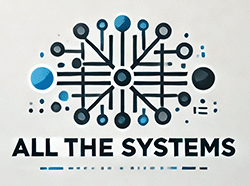In this post I will show you how to create a SCCM device collection. Device collections are used in pretty much every other module inside SCCM. With collections you can deploy scripts, updates, assign configuration policies and more. It really is the most basic part of SCCM. I will refer back to this post often as there are MANY ways to create a device collection and in this post I just want to go over the most basic examples.
Lets get started:
In SCCM select the Assets and Compliance tab in the bottom left. Now select Device Collections in the left pane. Next, click Create Device Collection

You will now see the Create Device Collection Wizard in this initial window give your new collection a name and select a limiting collection. Depending on your situation and what you are trying to accomplish, you may want to select the all systems collection or one that is more specific to workstations, servers or an OU. Now click Next.

Set Membership rules

This is where things get interesting. You will notice that if you expand the Add Rule drop-down, you have a few options;
Direct Rule: Lets you select a device(s) directly based on pretty much any property of the device from name to even device owner. Lots of options here. The downfall here is its a one shot deal, you add your devices to the collection here but they never update or change.
Query Rule: This option lets you use query language to dynamically update your group based a on a schedule (default is 7 days but can be adjusted). You can find devices based on OU, subnet, part of a name, software installed, etc. The options here are limitless. I will do posts in the future showing query language examples you can use here.
Device Category Rule: This is my least favorite option. Though, that may just be because I haven’t really found a great use for it yet. With this option you can select devices that have been put into a certain category that you create. It would be things like BYOD, Company owned, Mobile device, etc. You get the idea. Could be cool, I just haven’t used it.
Include Collections: Including collections is a great way to create a larger collection holding smaller ones you have created. A good example would be if you have collections of servers in different OUs you can create a all servers collection by including all of those collections using this option.
Exclude collections: Exclude collections is just like include but excludes whatever devices are in the collection you select. This is great for making a collection of all servers EXCEPT the ones that are super important, assuming you have all of them in one collection.
The last thing to mention in this menu is the schedule at the bottom. By default the collection will update its membership every 7 days. I you would like it to update sooner, you can click Schedule… and set it to the interval you want. After you make your selections click next, review, finish. Your collection will now be created. Dont forget to right click on the new collection and then select update membership. This will populate your new collection.
